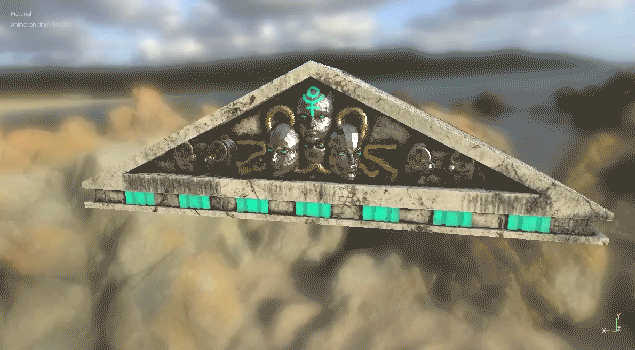
I can probably count on one hand the number of times an exhibition has made me completely reconsider how a viewer relates to an artwork, and how an artist might expand the limits of a given medium. The works of Meleko Mokgosi and Jessica Stockholder, for example, have little to with each other except that they have caught me off-guard for their respective abilities to stretch the predictable, tired-old field of painting into new immersive possibilities.
But digital art seldom genuinely surprises me. I suspect that this is, in part, because we’ve come to expect it to be novel, wondrous, or “medium-is-the-message” self-reflexive. In particular, virtual reality is a technology we’ve collectively anticipated for so long that it’s almost always underwhelming when actually experienced. The first time I “visited” the Digital Museum of Digital Art through an Oculus Rift, however, was one of those rare, memorable art-viewing phenomena that excited me about new potentials for making and experiencing artwork.
I was in an abandoned pharmacy, during Miami Beach’s Satellite Art Fair. After putting on the device, I was also on an alien beach, walking towards a piece of fantastical architecture. There was a thrilling realization that this was it: the moment we’d been promised all our lives by science fiction had arrived.
It was worth the wait. What really struck me about DiMoDA 1.0 was how cleverly the artists in the inaugural VR exhibition worked with this strange new context—in Jacolby Satterwhite’s “installation,” the established rules of gravity no longer applied. His digital sculptures could be seen from above, thanks to the viewer’s non-body’s newfound ability to jump impossible heights and float leisurely around an artwork. It was utterly unlike anything I had ever experienced, yet vaguely familiar to the acts of playing a video game or visiting a physical gallery.
Unlike so much early-adopter work for new technologies, the artists in the first iteration of DiMoDA—Claudia Hart, Tim Berresheim Jacolby Satterwhite, Salvador Loza and Gibrann Morgado—didn’t produce something that felt like a product demo. The show was a singular, subjective experience that didn’t feel like it had anything to prove.

Almost a year later, I’m curious to see how DiMoDA’s second exhibition Morphḗ Presence —which launches Friday at Superchief Gallery in Greenpoint—turns out. Founders Alfredo Salazar-Caro and William Robertson have brought curators Eileen Isagon Skyers and Helena Acosta onboard for DiMoDA 2.0, and it looks like the program will delve more deeply into both ontological concerns of digital artmaking as well as political issues. Miyö Van Stenis, for example, is presenting “Miyö’s War Room” within the museum. Her work deals with issues of design and ergonomics as well as sociopolitical conflicts in her native Venezuela. It seems that as the VR medium matures out of its novelty, it’s being applied to a broader set of conceptual concerns. Rosa Menkman works with “glitch” aesthetics and the corruption of data. I can only imagine what a buffering, unstable VR environment would look like. Holodeck malfunctions, however, always lead to the weirdest episodes of Star Trek.
DiMoDA 2.0: Morphḗ Presence opens at Superchief Gallery in Brooklyn on September 9th 6PM – 10PM and closes September 29th 6PM – 10PM.
Artists: Miyö Van Stenis, Brenna Murphy, Theo Trian, Rosa Menkman


Comments on this entry are closed.